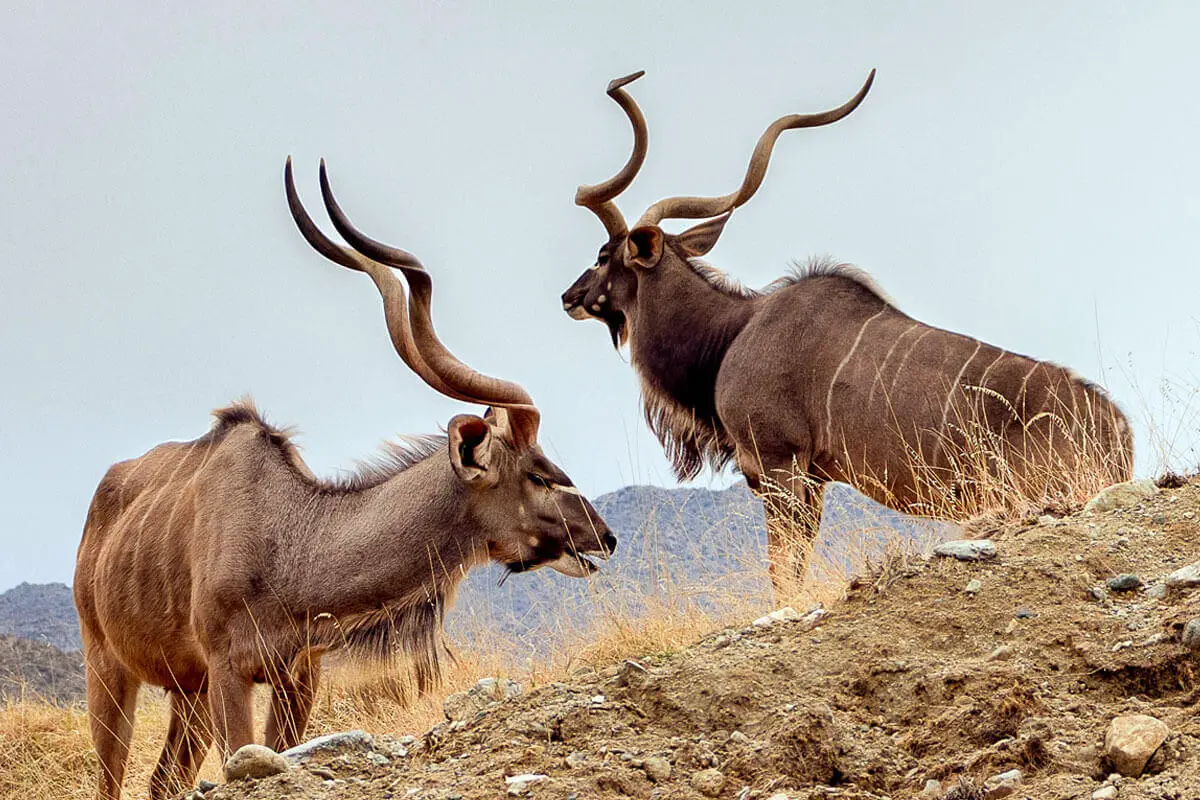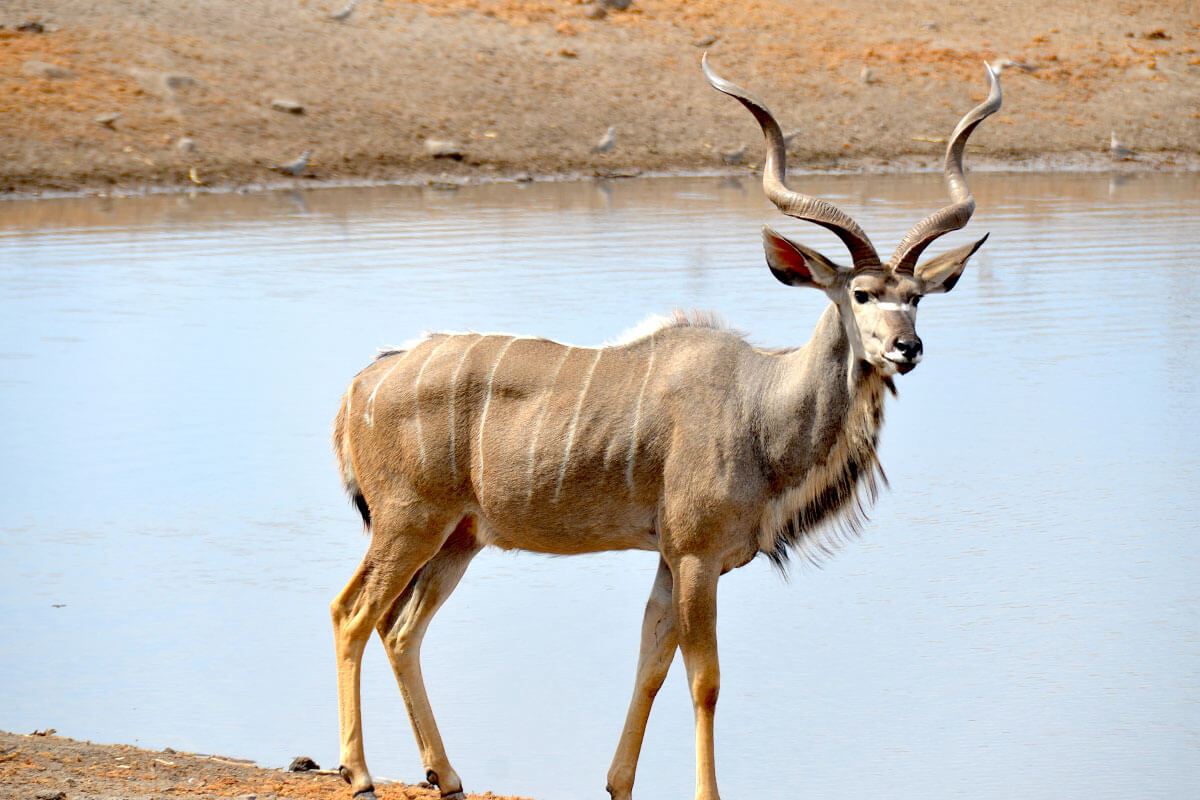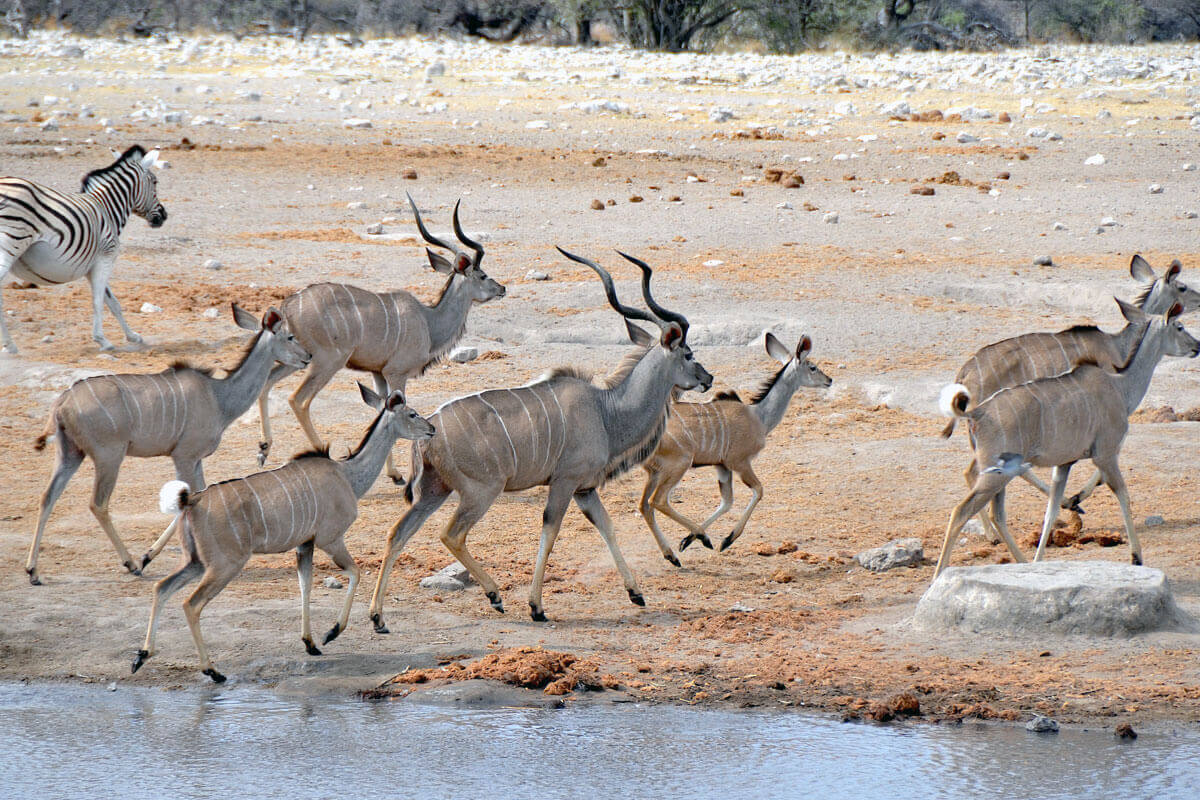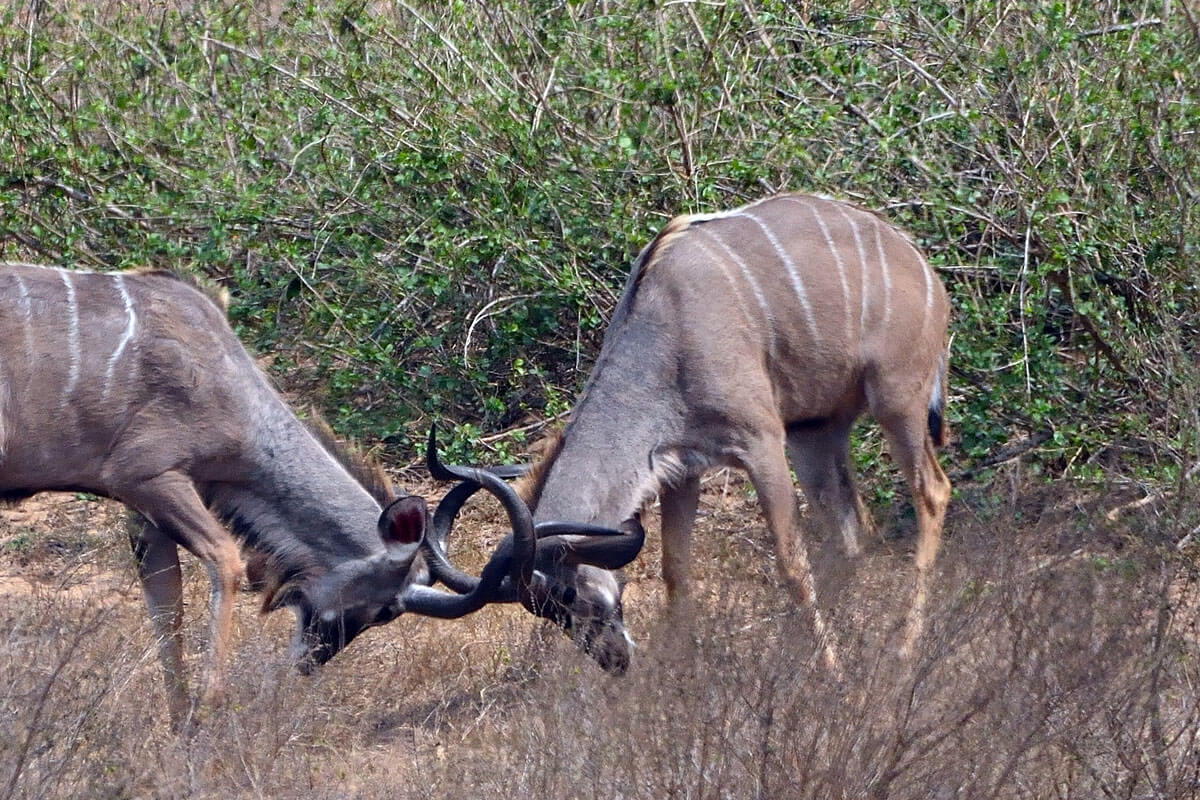Step into the enchanting realm of Africa's wildlife and uncover the secrets of the magnificent kudu antelopes. With their elegance and awe-inspiring presence, kudus are a true spectacle of nature.
Imagine the golden savannah, where these majestic creatures emerge from the grass, showcasing their spiral horns that reach for the heavens.

In this article, we'll delve into the habitat, behaviour, and remarkable adaptations that allow them to thrive in Africa's ever-changing landscape. Embark on this journey with us and embrace the magic of the kudu's story.
Facts About Kudu Antelopes
1. Differences In Species
There are two species of kudu antelope - the greater kudu (Tragelaphus strepsiceros) and the lesser kudu (Tragelaphus imberbis).
The greater kudu is the larger of the two, with a more muscular build and longer, spiral horns that can grow up to 6 feet in length. The lesser kudu is smaller, with shorter, straighter horns that are usually only around 2 feet in length. The lesser kudu is also more agile and better adapted to living in densely forested areas.

2. Kudu Horns
The horns of kudu antelopes are one of their most distinctive features. Both the greater and lesser kudu have horns, but the horns of the greater kudu are much larger and more impressive. The horns are composed of bone and continue to grow throughout the kudu's life.
The horns of the greater kudu can reach lengths of up to 6 feet, making them some of the longest horns of any antelope species. The horns of the lesser kudu are smaller and straighter, with a length of around 2 feet.
The horns are used primarily for defence against predators and in battles between males during the breeding season. Male kudus will often engage in violent fights, locking horns and pushing each other until one can overpower the other.
3. Size & Weight
Kudu antelopes are medium-sized antelopes that can be as tall as 5 meters at the shoulder and up to 180 kilograms in weight. The greater kudu is larger than the lesser kudu and males of both species are generally bigger than their female counterparts.
Despite their large size, kudu antelopes are incredibly agile and can jump over obstacles that are 8 feet high from a standing position. This makes them one of Africa's most impressive and athletic animals.
Here's a table comparing the size and weight of both the lesser and greater kudu as well as their male and female sizes:
| LESSER KUDU | GREATER KUDU | |
|---|---|---|
| Height (shoulder) | 3 - 4 ft (0.9 - 1.2 meters) | 4.5 - 5.5 ft (1.4 - 1.6 meters) |
| Weight in males | 150 - 200 lbs (68 - 90 kgs) | 400-500 lbs (181 - 226 kgs) |
| Weight in females | 120 - 150 lbs (54 - 68 kgs) | 250-400 lbs (113 - 181 kgs) |
Despite their sizes, kudus are very agile and capable of surviving in the wild - able to jump over obstacles.
4. Habitat
Kudu antelopes are found in a wide range of habitats across sub-Saharan Africa, including woodland, savannah, and mountain regions. They can adapt to a variety of environments, as long as they have access to water sources and food.
The greater kudu, in particular, is very well adapted to living in arid and semi-arid regions where water sources are more limited.
The lesser kudu can be found in the wild in Ethiopia, Kenya, Somalia, South Sudan, Uganda and Tanzania.
The greater kudu can be found in these countries;
|
|
|
|
|
|
|
|
|
|
|
|
|
|
|
|
|
|
5. Diet & Eating Habits
Kudu antelopes are primarily herbivores, consuming a range of vegetation such as leaves, shoots, fruits, flowers, and bark.
While they are primarily browsers, Kudu antelopes they are known to graze on grass when it is available. In certain seasons or habitats where the grass is abundant, kudus may rely more heavily on grazing.

They have a unique digestive system that allows them to break down tough, fibrous vegetation that other animals cannot. This ability to eat tough vegetation gives them an advantage in times of food scarcity, as they can feed on plants that other herbivores cannot.
6. Speed
Kudu antelopes are fast runners that can reach speeds of around 60 kilometres per hour (37 miles per hour). This allows them to easily run away from predators as well as move around in their vast wilderness habitat.
Beyond the speed, kudu antelopes are good jumpers and can jump up to 8 feet high when startled from a standing position.
7. Social Habits

Kudu antelopes are generally solitary or live in small groups consisting of females and their young. Males may form bachelor groups or remain solitary, only joining the females during the breeding season.
They use scent marking and vocalizations to communicate with each other, and their social structure is similar to other African antelopes, such as impalas and gazelles.
8. Reproduction & Lifespan
A female kudu typically gives birth to one calf after a pregnancy of around 8 months. A newborn kudu calf can stand and run within a few hours of birth.
Calves stay with their mothers until they are around 1 year old but are quite capable even at 6 months. Young kudu antelopes reach sexual maturity between 2 and 3 years.
Kudu antelopes have a relatively low reproductive rate compared to other large African herbivores, such as wildebeest and zebras.
Kudus have a lifespan of between 8 and 10 years in the wild but can live longer in captive environments where there are no predators as well as access to veterinary care.
Related article: Comparing the lifespan of common African animals
9. Threats
Kudu antelopes face a number of threats, including habitat loss due to human encroachment, poaching for their meat and horns, and predation by lions, leopards, African wild dogs, and other large carnivores.
Their horns are highly valued in some cultures for their perceived medicinal properties, and as a result, kudus are often hunted illegally. The greater kudu is more vulnerable to habitat loss due to its larger body size and need for more space.

10. Conservation Status
According to the International Union for the Conservation of Nature (IUCN), the greater kudu is classified as Least Concern. This means that the wild populations and habitat range indicate no threat to the greater kudu's existence.
The lesser kudu on the other hand is classified as Near Threatened. This is because it lives in a smaller range of habitats and the habitat loss directly threatens the smaller populations.
Both the greater and the lesser kudu are still greatly impacted by the shrinking habitat and destruction of the ecosystems in which they live. Protected areas such as national parks and game reserves protect them from poaching and human activity, and sustainable tourism helps to keep them protected and offers alternatives to the local economies.
Final Thoughts
Kudu antelopes are some of the most fascinating and unique animals found in Africa's wild places. Their ability to adapt to a variety of habitats, their unique digestive system, and their impressive physical abilities make them truly remarkable creatures.
While they are faced with the challenges of quickly changing ecosystems, they are unbelievably adaptable and a great part of the biodiversity. Their horns are quite impressive, but once you dig deeper as we have, you realise they are yet another of those incredible animals very few people know about.
With knowing more about the kudu antelopes, we bet you will be even more fascinated when you get to see them next - because now you know all this.
